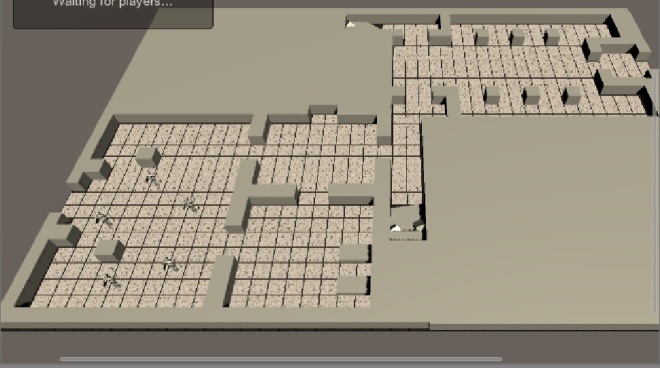This is polish week and almost all of what we have logged as artifacts is now within the game itself. What this boils down to is that at the moment no new systems are added, but tweaked, updated or made to shine just a bit more (sometimes literally).
What then could there be to discuss? Quite a bit, as those tweaks tend to be what takes a game from being acceptable to being either great or awful.
For instance this week we chose to address the sluggish nature of some of our player movement in a more direct way than before: Changing the actual game-speed to run at 20 percent faster than before. More specifically, the tick-rate or update-rate of the game http://www.nbnco.com.au/blog/entertainment/what-is-tick-rate-and-what-does-it-do.html
As our game is a network game, this is quite a different change than just altering the amount of updates on the server side. The client needed to send updates at a somewhat higher rate than before as well, so as to account for lost packets when deciding on how a player makes their next moves.
After the actual programming was completed, testing began to see if players felt the game was more or less responsive. In general the change was seen as a positive one, but a slight issue cropped up with animations, as they too were locked into tick-rate (a possibility only because of the small amount of packets being sent between updates). This should never be done for any game with real-time changes during gameplay or with more than a handful of players.
The issue was that the animations would play a bit too fast and felt “jittery” to players who barely had a chance to see the effects. Luckily our old friend State Machines came along to help, or in other words, the Unity Animator. Changing up the animations speed itself meant the attack could be tweaked to move at a few percents slower pace without impacting the effect on other models as they collided with one-another, especially during attacks. While this essentially “hid” the fact that attack effects are not tied directly into animations, it still looked close enough at the angle seen by our cameras.








 This week has mostly seen smaller fixes in our codebase, as we are essentially feature-frozen. However as feedback has continously asked for better explanations ingame on how to actually play the game, this post will detail how I have implemented our TutorialButton class, that will display a sprite on screen and remove it once a player presses the appropriate button. It is not a hard lesson, but there really is not much else to speak of this week as pretty much all important systems are already in the game or being tweaked by other members of our team.
This week has mostly seen smaller fixes in our codebase, as we are essentially feature-frozen. However as feedback has continously asked for better explanations ingame on how to actually play the game, this post will detail how I have implemented our TutorialButton class, that will display a sprite on screen and remove it once a player presses the appropriate button. It is not a hard lesson, but there really is not much else to speak of this week as pretty much all important systems are already in the game or being tweaked by other members of our team.